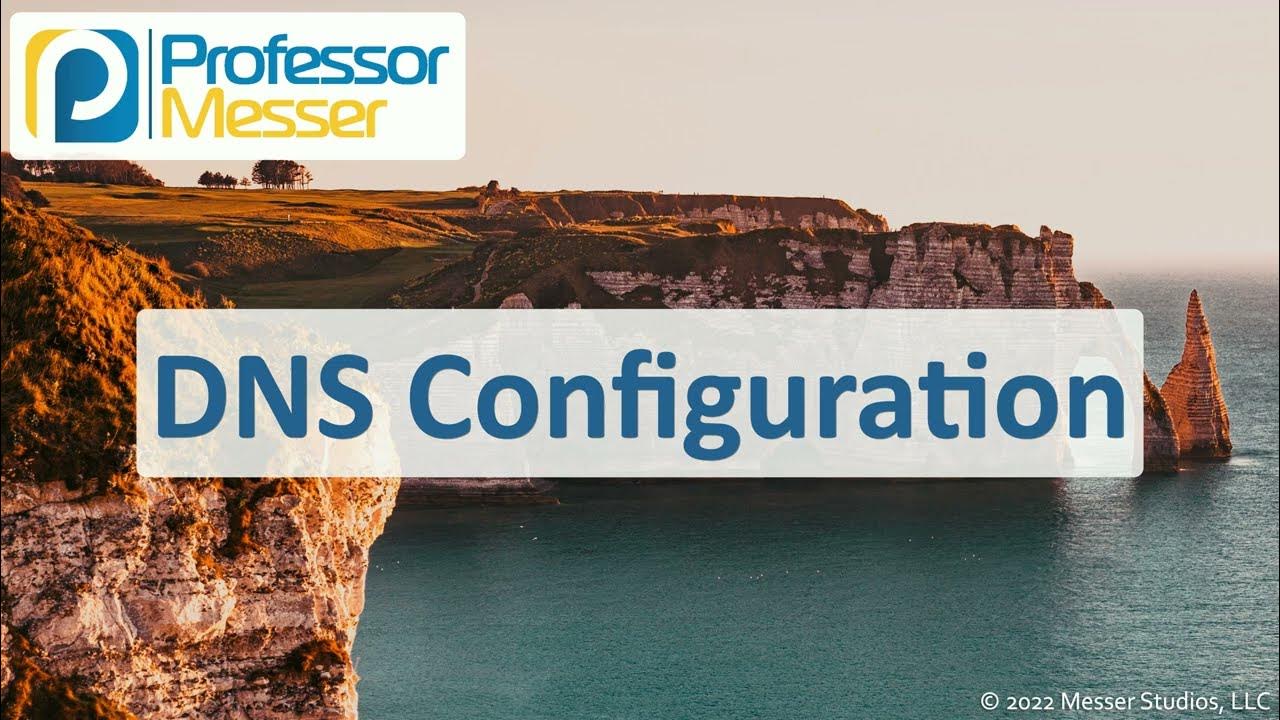DNS - Domain Name System in Computer Networks
Summary
TLDRThis educational video delves into the Domain Name System (DNS), explaining its fundamental role in translating domain names into IP addresses, which is essential for internet communication. The host illustrates DNS with practical examples using Wireshark, discusses the structure of domain names including generic and country domains, and clarifies hierarchical access. Further, the video explores DNS database organization and the two primary methods of address resolution: iterative and recursive, with an emphasis on the efficiency of the recursive method. The content is enriched with demonstrations of NS lookup commands and insights into DNS entries, TTL values, and the distributed database approach involving root, name, and host servers.
Takeaways
- 🌐 DNS (Domain Name System) is used to get IP addresses from domain names, facilitating communication between computers on a network.
- 🔍 The video demonstrates DNS in action using Wireshark software to show how a DNS query is sent and a response is received, retrieving an IP address from a domain name.
- 🏛️ Domain names are categorized into generic domains (like .com, .org, .edu) and country domains (like .in for India, .jp for Japan), each serving different purposes and regions.
- 📚 The hierarchical structure of domain names includes root domain, top-level domain (TLD), second-level domain, and subdomains, which are crucial for understanding how DNS organizes and resolves names.
- 📈 DNS uses a distributed database approach with three main levels: root DNS servers, name servers, and host servers. This structure helps manage and resolve domain names efficiently.
- 🔄 IP addresses are dynamic and can change over time, which is why DNS entries include a Time-To-Live (TTL) field to indicate how long the IP and domain name pairing remains valid.
- 🔎 The NSLOOKUP command is used to query DNS and retrieve IP addresses for a given domain name, demonstrating the practical application of DNS in accessing websites.
- 🔄 DNS resolution can occur through two methods: iterative, where the local server makes multiple requests to different servers to resolve the domain name, and recursive, where the local server delegates the resolution process to a DNS server that completes the task.
- 🕒 The time taken to resolve a domain name and retrieve an IP address depends on the method used, with recursive resolution generally being faster than iterative resolution.
- 💡 The video emphasizes the importance of understanding DNS, its structure, and resolution methods, especially for those preparing for competitive examinations or needing a deep dive into network communication.
Q & A
What is the primary function of DNS?
-The primary function of DNS (Domain Name System) is to translate domain names, which are easy for humans to remember, into IP addresses that computers use to identify each other on the network.
What are the two types of IP addresses mentioned in the script?
-The two types of IP addresses mentioned are IPv4 and IPv6.
How does the DNS protocol operate?
-DNS protocol operates using a client-server model where the client sends a query to the DNS server, which then responds with the requested IP address associated with the domain name.
What is a practical example of using DNS mentioned in the script?
-A practical example given in the script is using Wireshark software to observe DNS requests and responses, such as getting the IP address for 'grammarly.com'.
What are the two general categories of domain names discussed in the script?
-The two general categories of domain names discussed are generic domain names (like .com, .org, .edu) and country domain names (like .in for India, .jp for Japan).
How does the script explain the hierarchical access to domain names?
-The script explains hierarchical access to domain names through a practical example, showing how domain names are structured from the root domain to top-level domains, second-level domains, and subdomains.
What is the purpose of the TTL field in DNS entries?
-The TTL (Time To Live) field in DNS entries specifies the duration for which the IP address and domain name are considered validly associated with each other before they become invalid and need to be refreshed.
What is the difference between iterative and recursive methods of address resolution in DNS?
-In iterative address resolution, the client makes multiple requests to different DNS servers until it gets the IP address, while in recursive resolution, the local DNS server makes all the necessary requests on behalf of the client and provides the final IP address.
What does the script mean by 'root DNS server', 'name server', and 'host server' in the context of DNS database organization?
-In the context of DNS database organization, 'root DNS server' refers to the top-level servers that manage the DNS hierarchy, 'name server' refers to the servers that handle specific top-level domains (like .com, .org), and 'host server' refers to the servers that host the actual websites or services associated with domain names.
How does the script illustrate the dynamic nature of IP addresses?
-The script illustrates the dynamic nature of IP addresses by explaining that IP addresses can change over time and that recently accessed domains are stored in cache entries for faster access, as they do not change immediately.
What command is used in the script to look up IP addresses associated with domain names?
-The script uses the 'NS lookup' command to find the IP addresses associated with domain names.
Outlines

Cette section est réservée aux utilisateurs payants. Améliorez votre compte pour accéder à cette section.
Améliorer maintenantMindmap

Cette section est réservée aux utilisateurs payants. Améliorez votre compte pour accéder à cette section.
Améliorer maintenantKeywords

Cette section est réservée aux utilisateurs payants. Améliorez votre compte pour accéder à cette section.
Améliorer maintenantHighlights

Cette section est réservée aux utilisateurs payants. Améliorez votre compte pour accéder à cette section.
Améliorer maintenantTranscripts

Cette section est réservée aux utilisateurs payants. Améliorez votre compte pour accéder à cette section.
Améliorer maintenant5.0 / 5 (0 votes)






